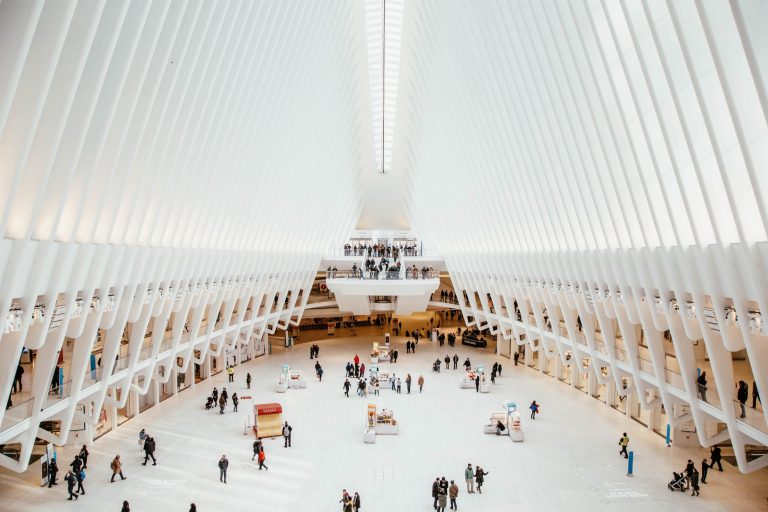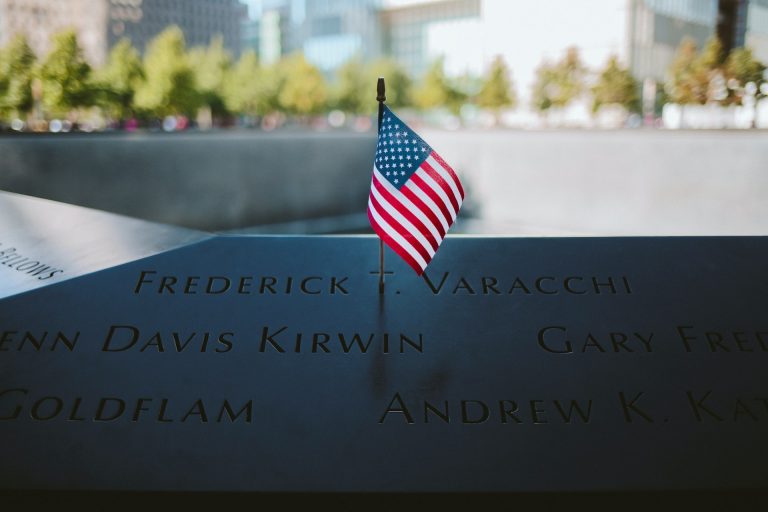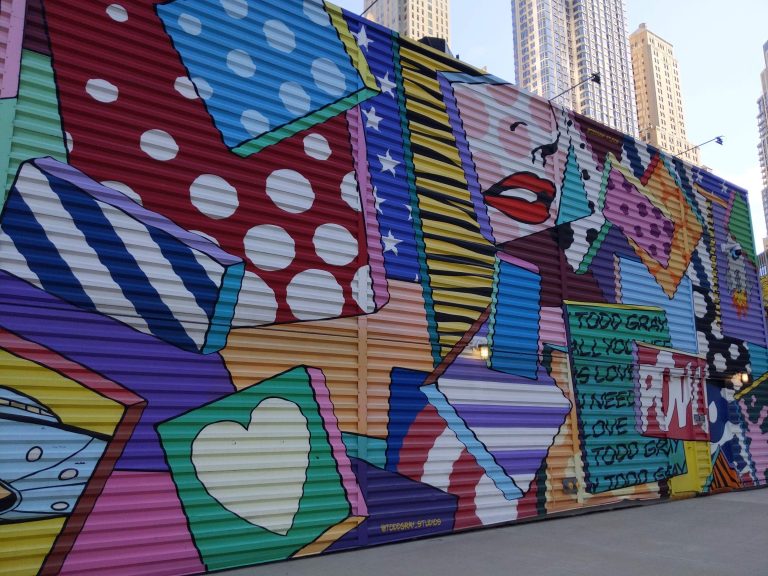When you visit the 9/11 Memorial at Ground Zero, you’ll probably notice a large white building with steel, wing-shaped tips reaching toward the sky. That’s the Oculus, a transportation hub and shopping mall built alongside the One World Trade Center.
The building is one of many that were included in the city’s plan to rebuild the World Trade Center after September 11. If you’d like to see this magnificent structure up-close, you can. In this post, I’ll share a little about the history of the Oculus, including its design, Ground Zero connection, and how to visit when you’re here in New York.
What is the Oculus?
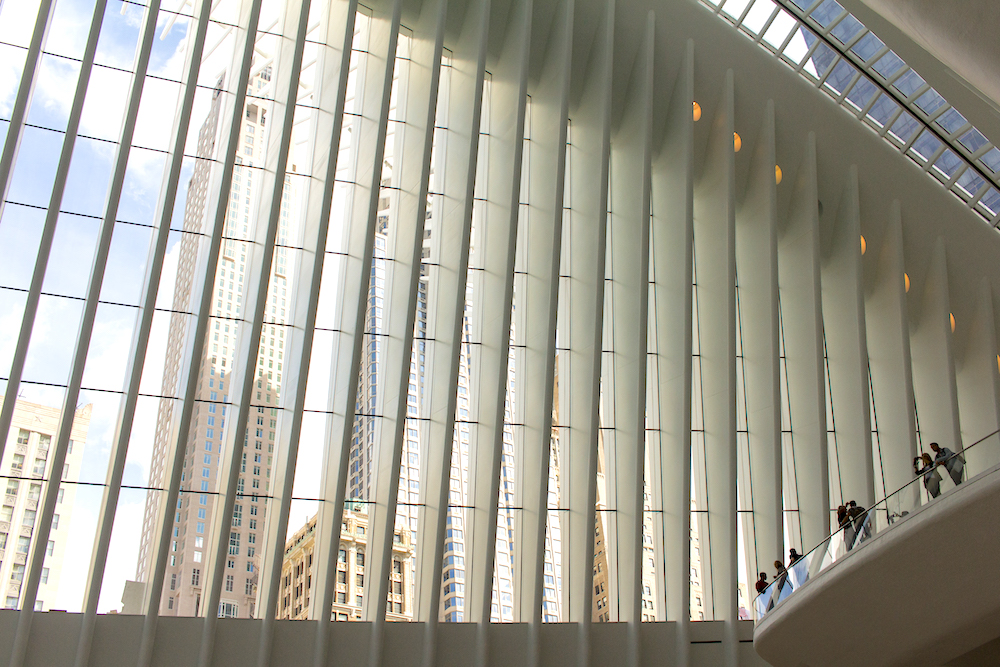
Located in the Financial District at Ground Zero, the Oculus is one of the largest transportation centers in New York as well as a shopping mall with retail, restaurants, and even public art.
After the devastating September 11th attacks, plans were quickly put in place to rebuild and reimagine the World Trade Center. These plans included the idea for a transportation hub that would bring business and people back to the area — the Oculus.
By 2004, construction had begun, and 12 years later, the Oculus opened to the public. As a project with a commercial and artistic focus, the Oculus has come to represent the city’s strength and a beacon for resilience.
Even if you don’t plan on using any of the transportation available at the hub, visiting the Oculus is unforgettable. There’s no building like it in the world, and a visit here is a nice capstone to your tour of Ground Zero.
History of the Oculus: Building After 9/11

Many people tend to forget how much damage was really caused by 9/11. The entire World Trade Center, all seven buildings, were completely destroyed, along with the PATH train station that served millions of commuters traveling to Lower Manhattan.
When rebuilding plans were discussed, one of the first major issues to tackle was building a new station. City planners decided that the new station would be a combination transportation hub and shopping center — a place that attracted residents and tourists alike.
Design of the Oculus NYC
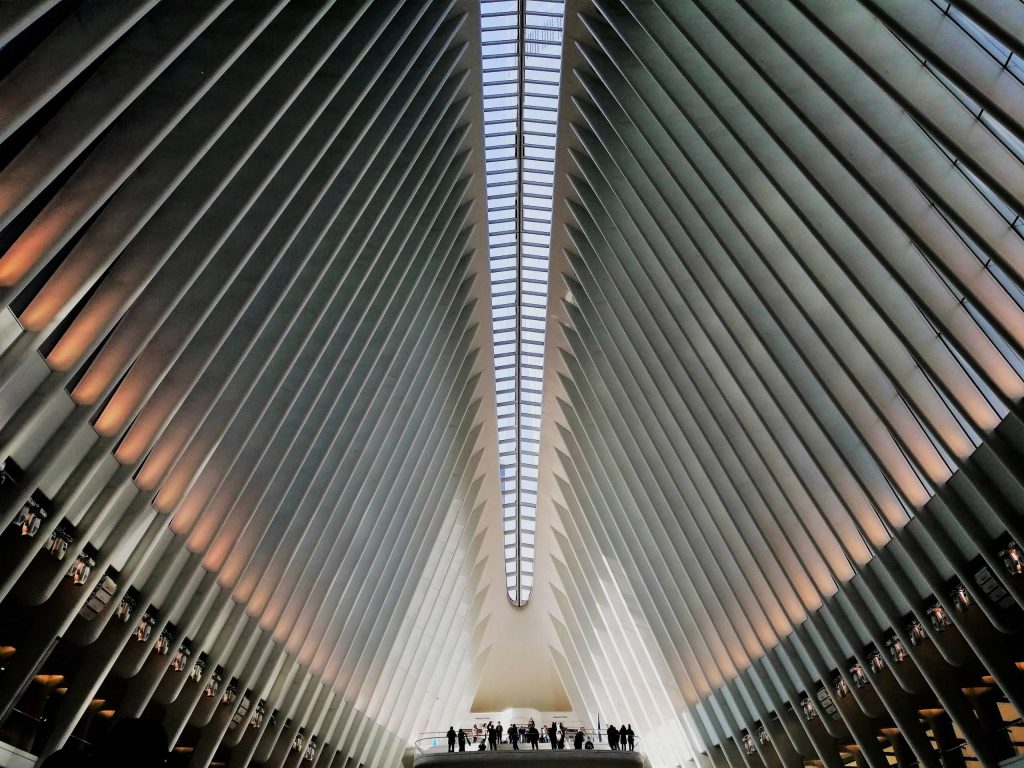
The Oculus was designed by Spanish architect Santiago Calatrava. He intended it to resemble a dove leaving a child’s hands. You can see it in the tall, crossed steel columns that make up the exterior. Together, this series of columns forms a pair of 350-foot wings.
Why is the Oculus named “the Oculus”?
The name comes from the strip of windows, or skylights, along the spine of the roof. Oculus is the Latin word for “eye,” which, in architecture, refers to a round or eye-like opening with a view of the sky. Take a look up through the windows, and you’ll see Freedom Tower. It’s an inspiring sight.
This opening also allows sunlight to pour in each morning. The angle of the windows is particularly placed so that every year on the anniversary of the attacks, the sun shines directly through the skylight and illuminates the main hall at 10:28 a.m. (the time of the collapse of the second tower). It’s called the “Way Of Light.” Calatrava positioned the building slightly tilted from the street grid in order to achieve the effect.
While the complex design was responsible for several construction delays, the building is now a regular destination for visitors to Ground Zero. People take pictures in and around the monumental structure.
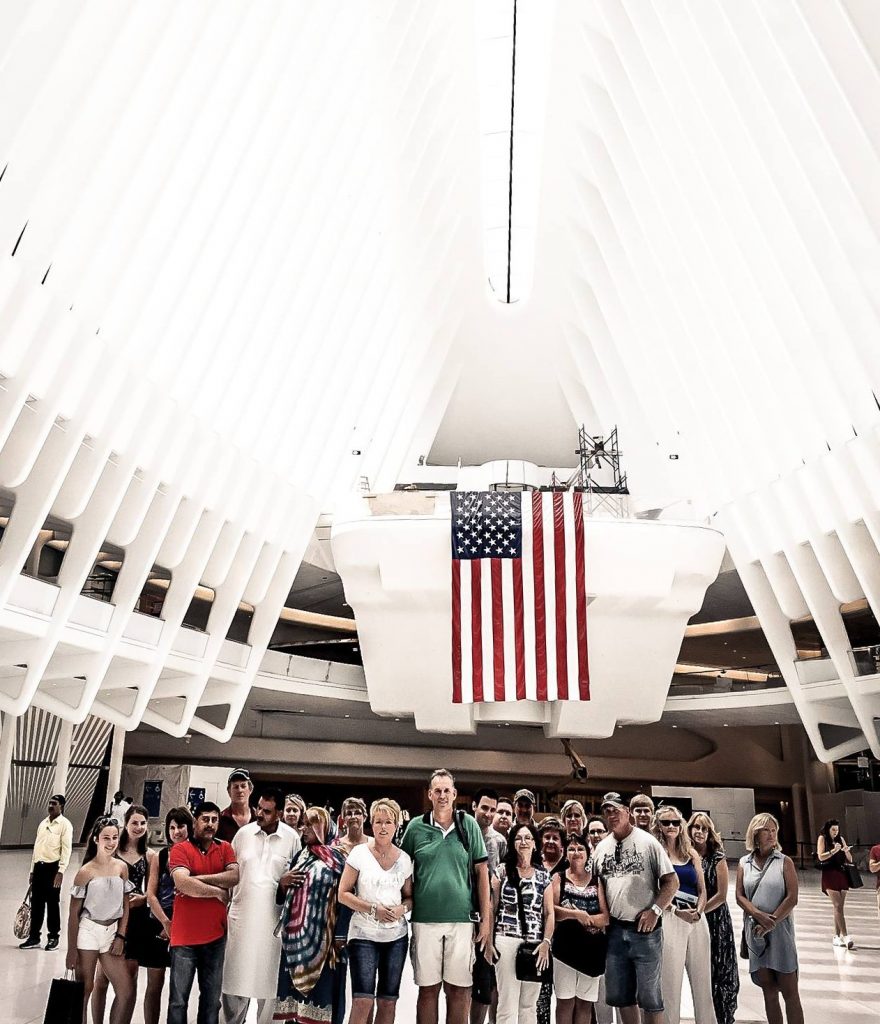
Here’s a group photo we took on one of our tours. Note how bright the interior is. You can almost feel the New York sunshine.
Transportation
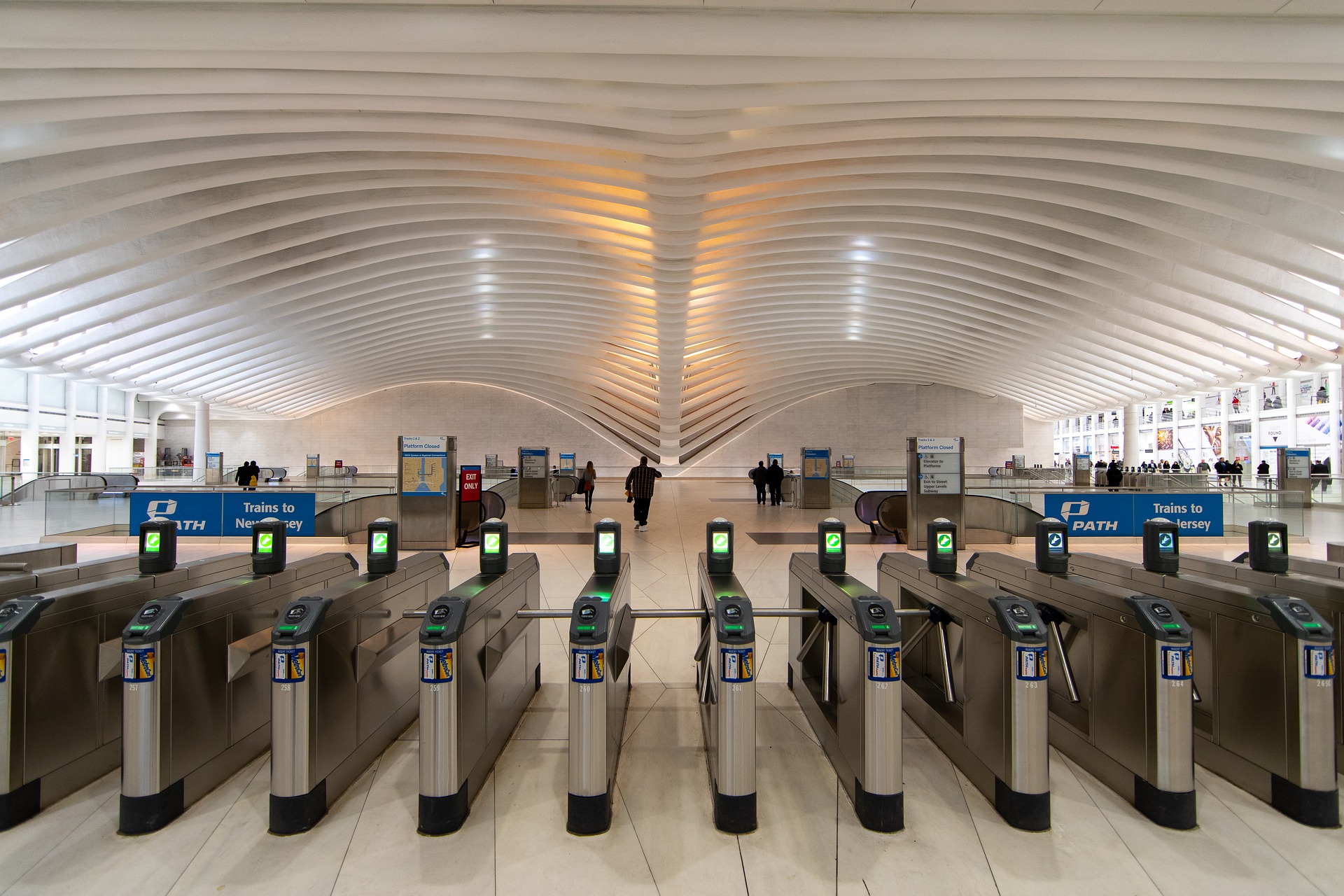
The Oculus also connects people from all around the city — and around the world. Commuters using the Oculus will find trains leading to New Jersey and across NYC. As it was intended, the station serves the PATH train, but it also makes a direct connection to over 10 other subway lines.
Plus, the building’s various tunnels and access points connect visitors to the Battery Park City Ferry Terminal, the September 11th Memorial & Museum, Brookfield Place, and World Trade Center Towers 1, 3, 4, and 7.
Here are some impressive stats for you to get an idea of how busy this hub really is:
- The PATH station alone serves over 250,000 daily commuters.
- The Oculus is the third biggest transportation center in NYC.
Interesting facts about the Oculus
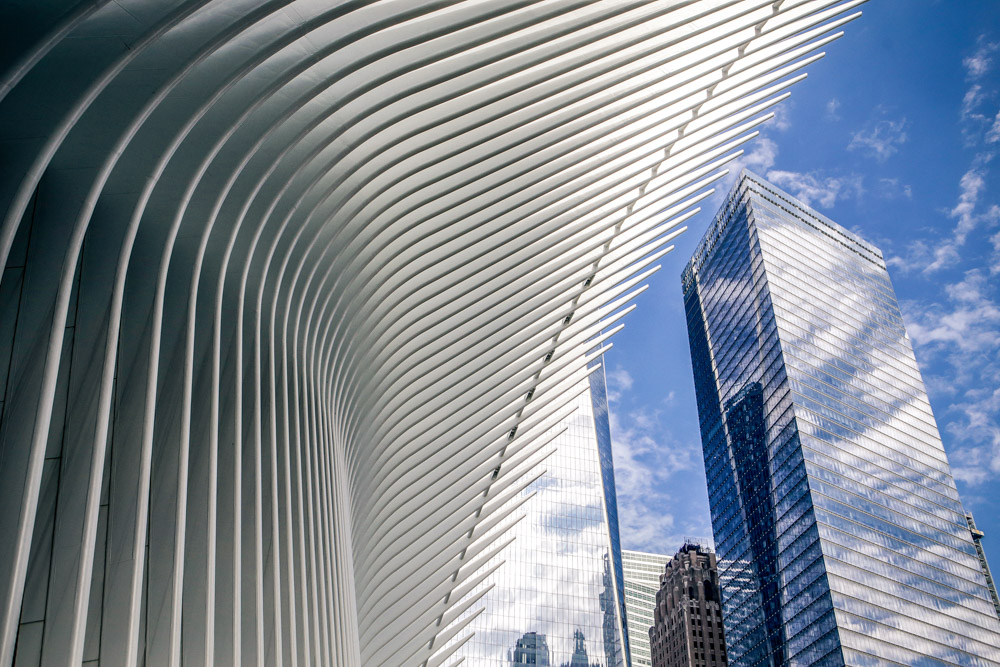
The Oculus is the most expensive train station in the world
The Oculus opened 10 years later than originally planned and cost more than first went into the budget.
Calatrava was given $2 billion dollars to create his design. When all was said and done, he actually doubled the budget with a building cost of $4 billion. There were a few causes for the high price tag: the elaborate design, having to speed up the pace of construction, and the delivery of custom-made materials, for starters. Today, the Oculus is considered the world’s most expensive train station.
The original plan included a retractable roof
Calatrava wanted the Oculus to have a retractable roof, but after a lot of discussion during the planning and building, it was decided that that was just a bit too much. The idea was that the wings on the roof would be able to open up, but this capability only added to the already high price tag of the building, so instead, the design was scaled down to skylights instead.
Now, to appease the architect’s wishes for retractability, the skylights open for 102 minutes on each September 11 in honor of the 102 minutes between when the first plane hit the towers and when the second tower collapsed.
The light can be especially magical if you catch it at the right time. Here’s a photo from one of our Ground Zero tours.
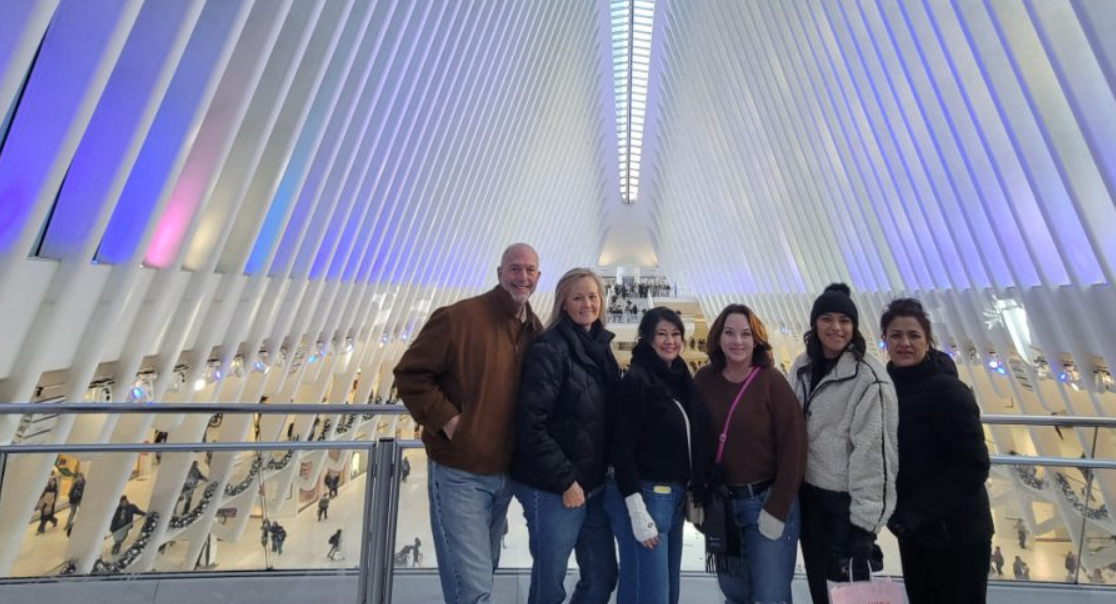
The original World Trade Center slurry wall is visible inside
A slurry wall — a structure used to keep water from penetrating soft ground — was built in the 1960s to keep the Hudson River from getting into the original World Trade Center. During the 9/11 attack, this wall is what kept the train tunnels from flooding, and, though it was damaged, it still stands today.
Visitors to the Oculus can see some of the remaining slurry wall, which is marked with a plaque. More of the slurry wall is in the 9/11 Memorial & Museum.
What to do at the Oculus in NYC
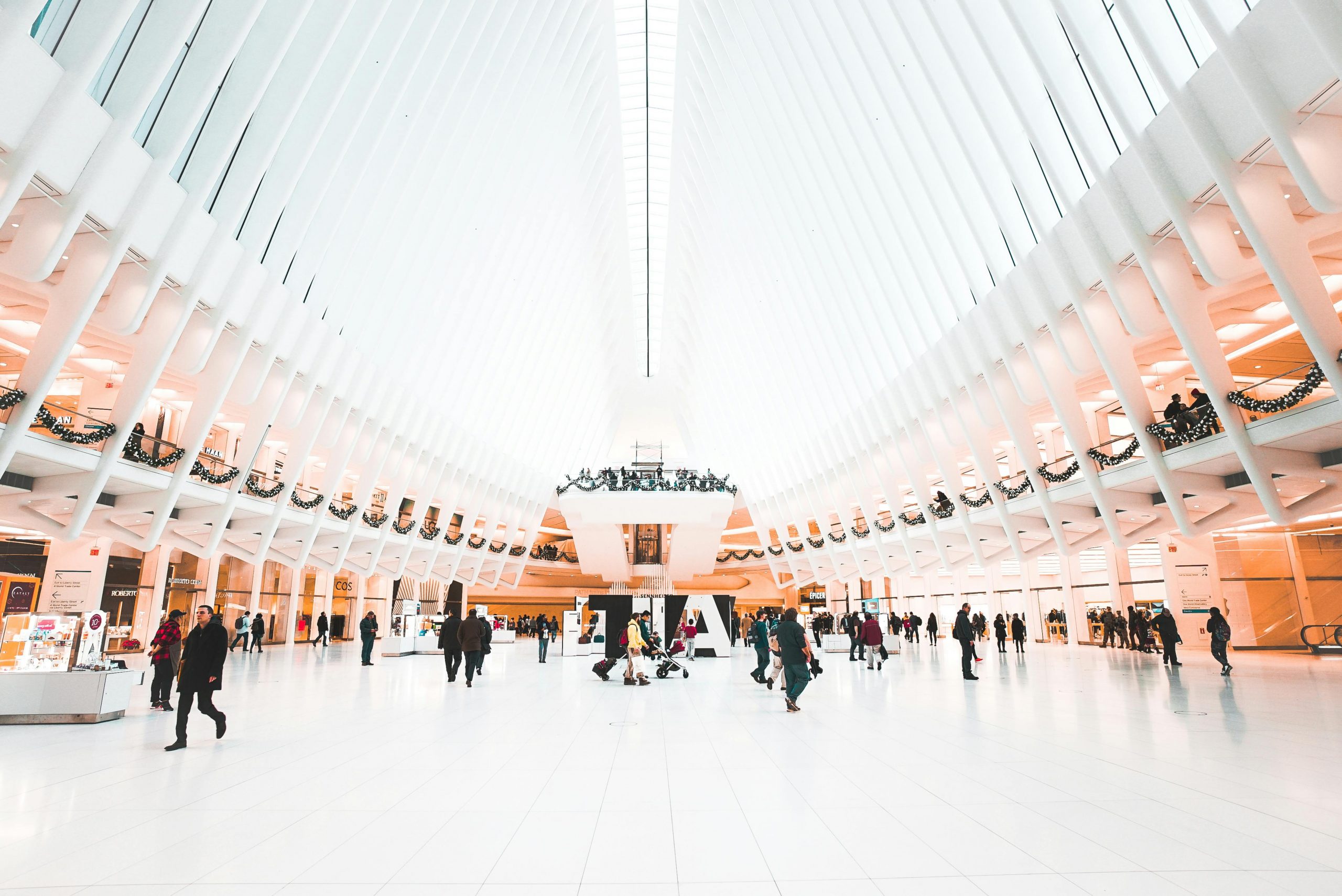
Aside from being a transportation hub, there’s also plenty to do while you’re in the Oculus — so make some time to stay a while, rather than just pass on through! You can buy clothes, get your iPhone fixed, or feed your sweet tooth. There’s over 350,000 square feet of retail and dining space.
Here’s some of the shops you’ll find inside the Oculus, among many, many others:
- Apple Store
- Banana Republic
- Kate Spade
- Kiehl’s
- COS
- Pop Mart
- Sugarfina
- Swatch
- Moleskine
Don’t forget to check each hallway while you’re at the Oculus — that’s where you’ll find even more shops. While you might first be drawn to the wide open area in the middle of the mall, there are a few hallways off to the side, and each one has a few more shops to explore.
You can even get your essentials if you forgot something at home during your travels, because there is not just one drugstore, but two inside the Oculus. You’ll find a Duane Reade and a Walgreen’s where you can grab that toothpaste you accidentally left behind.
Local tip: You never know what you’ll find inside the Oculus, too. During the winter, there’s an “ice” skating rink (with roller skates), and sometimes brands will set up other free or inexpensive activities for visitors to enjoy. One day on my way to work, there was a random grand piano sitting out, and a passerby sat down and played a few songs for everyone!
Tour at the Oculus
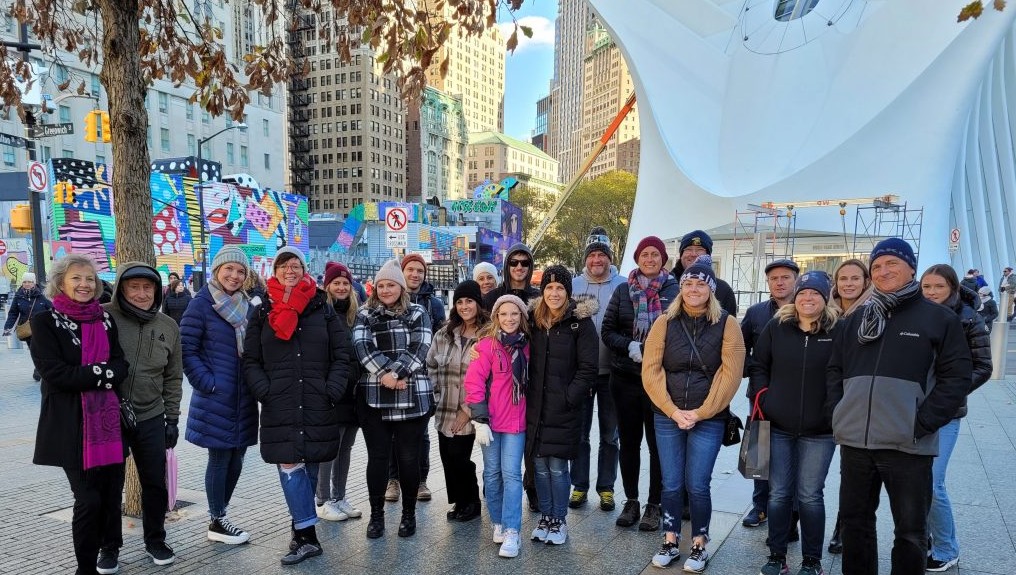
Because the Oculus is such a central part of Ground Zero, a visit is often part of our 9/11 Memorial Ground Zero Tour. This is a great way to not just see striking white wings of the Oculus but actually understand why it’s here and how much Ground Zero has changed since 9/11. It’s a story of resilience and NYC spirit, told by a New Yorker with a personal connection to the events of that tragic day.
You might even be able to grab a photo inside the Oculus. The tour is different with every guide — although it always covers the memorial and St. Paul’s Chapel, two of the most important Ground Zero sites — but as you can see from the photos below, we love snapping group pics inside (especially winter when it’s brisk here in NYC!).
Photo ops inside the Oculus
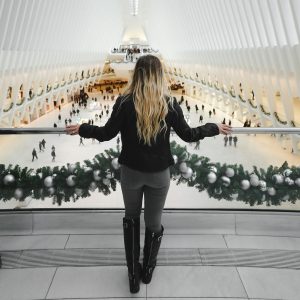
Besides shopping, this really is a great place for photos. Whether you just want a pic for Instagram or you’re looking for that perfect group shot, the open spaces and striking interior make for a perfect setting.

One great photo op is to go up to the second level and shoot across the main transit hall so you can capture the steel ribs of the roof above. See what I mean in the photo above, another one taken on a tour.
Or try a side hallway when the crowds clear and snap a quick group photo against the stark white background.
Photos taken on the bottom floor look great too!
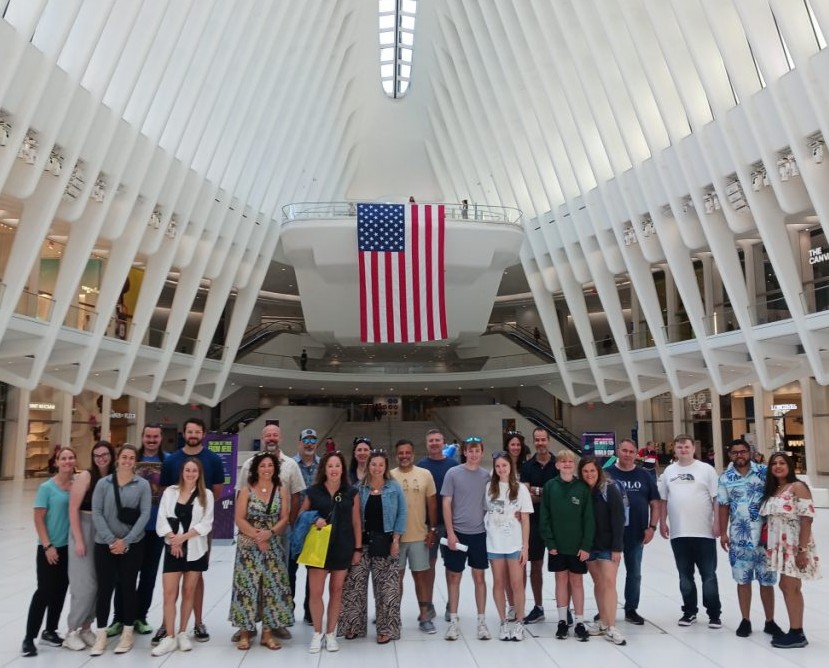
Art exhibits at the Oculus
The Oculus is also home to pop-up art exhibits from time to time. Similar to brand pop-ups with activities, sometimes artists will bring their work to the Oculus for travelers and locals to enjoy. One of my recent favorites showcased sculptures made from MetroCards!

One year, they had a temporary exhibition called The Strangers Project, where people could write an anonymous message and share it on the walls of a room inside the Oculus. The messages were heartwarming, funny, sad, surprising, and more, and you could stop in to read them for free, like a window into another person’s life.
It’s not exactly art, but the Oculus is also decorated for Christmas each year, which makes for a nice photo if you happen to be here at this festive time of year.
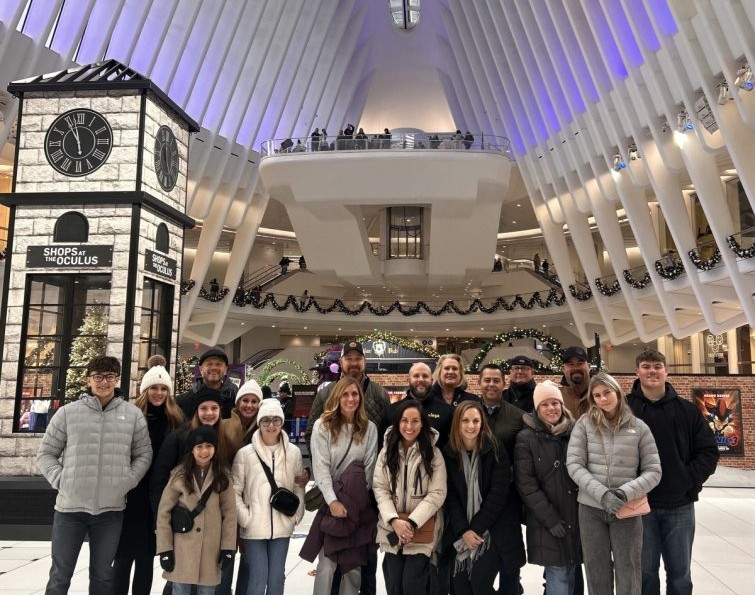
That’s the thing about the Oculus and so many places in New York — you never know what might be waiting for you!
What to eat at the Oculus
Whether you come in the morning, at noon, or in the evening, you’ll be able to find something to eat. You can grab something quick for breakfast from Dunkin’ or Starbucks, a lunch salad from Sweetgreen, or have a cozy dining experience at Metropolis. Don’t forget dessert! There’s a Haagen-Dazs tucked down one hallway and La Maison du Chocolat so you can save something for later.
Other restaurants include:
- Jamba Juice
- Épicerie Boulud
- Devon and Blakeley
- Pret A Manger
- Wasabi Sushi & Bento
One spot not to miss is Eataly! It’s located on the top floor of 4 WTC. Not only will you find groceries there, but you can also grab a coffee, fresh pasta, pizza, and much more in this Italian hotspot.
Local tip: If you’re at the Oculus on a weekday, keep in mind that there will likely be a lot of New Yorkers commuting in the morning and grabbing food during their lunch breaks. The breakfast spots will be busy in the mornings, and the lunch spots will be busy during those hours. There are several office buildings in the area — including right above you in Freedom Tower — which means a lot of busy New Yorkers.
The best way (and time) to visit the Oculus
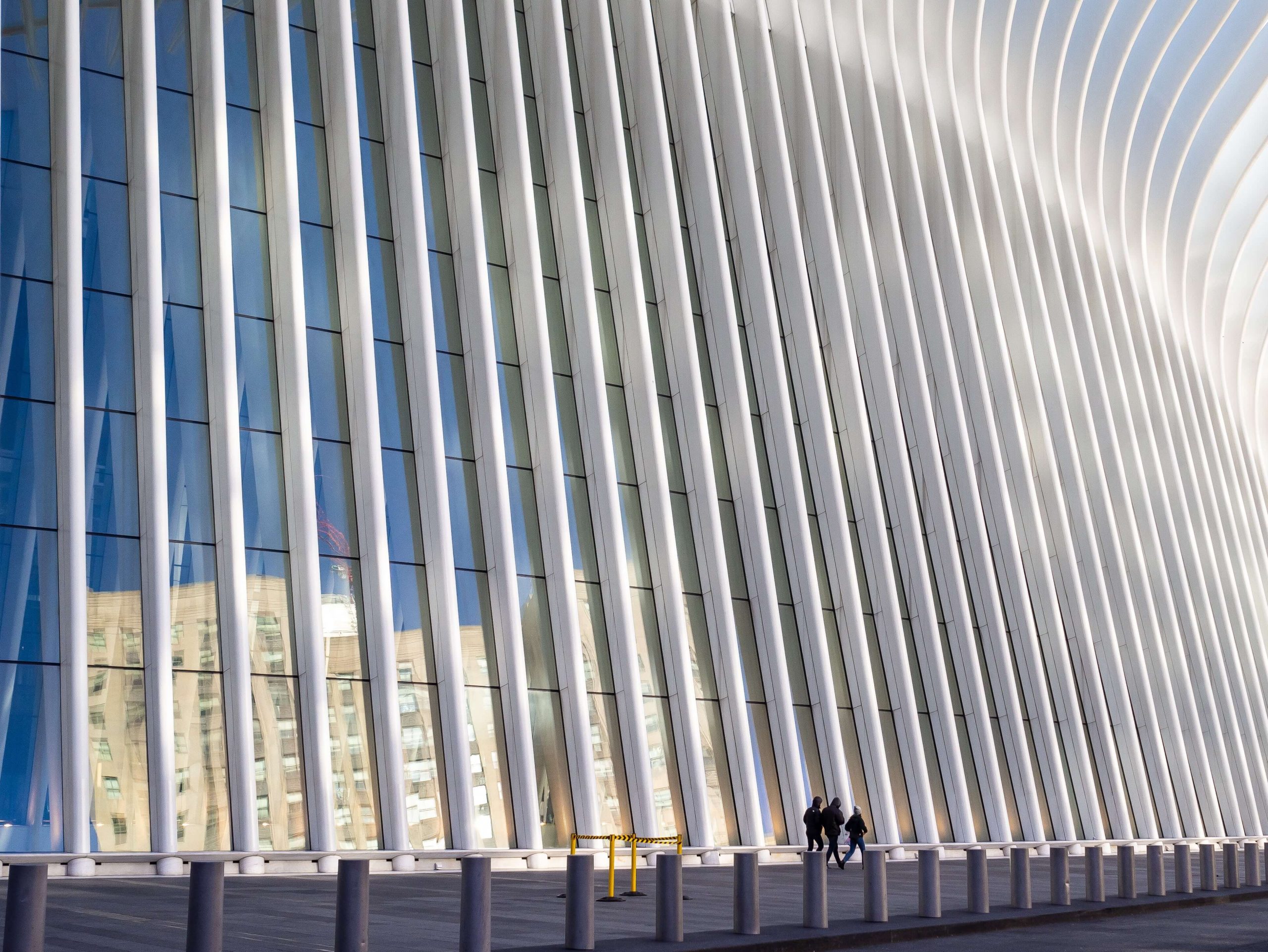
With the heavy amounts of commuters coming through the Oculus each morning and afternoon, the best time to visit is really any time outside of rush hour. During the week, you’ll find it the least crowded from 11 a.m.-3 p.m. and then again after 7 p.m.
Technically, the building is open 24/7, so you could stop by even late at night. If you visit after sunset, you’ll also notice the building is lit up, its elliptical center positively glowing. It’s a pretty cool sight.
Saturday and Sunday are relatively slow. Crowds sometimes come in waves, but the weekend tends to have lighter traffic, making it a good time to visit.
Because the Oculus sits directly across from the 9/11 Memorial, it’s a great place to grab a bite to eat or do some shopping before or after your visit.
My favorite part about the Oculus is just the experience of walking through it. The architecture is unique and feels otherworldly at times. It elevates the everyday experience of catching a train.
Another bonus of the building is its straightforward navigation. Calatrava specifically designed the layout with ease of direction in mind. It’s very easy to tell where you are, where you’re going, and where you’ve come from. It makes you feel more comfortable to just walk around and explore.
How the Oculus NYC moves us forward
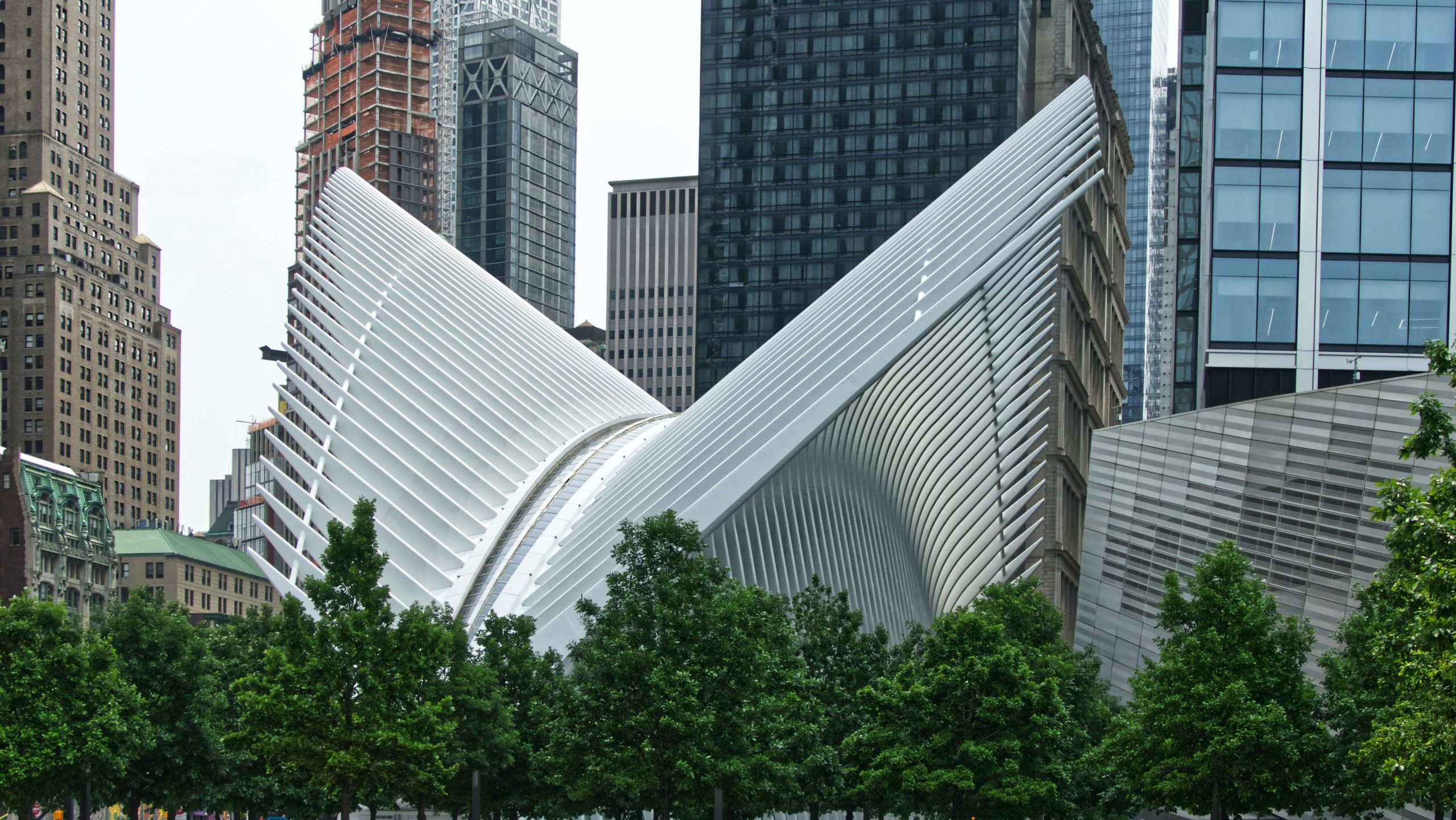
The World Trade Center is still very much growing and changing, and the people — especially tourists — that the Oculus was meant to attract are coming in more and more each year.
In response to this demand, more shops have opened, pop-up retail events have started, and the area is more active than ever. From farmers markets to art exhibits to musical performances, each day is different than the one before.
When you visit the memorial and see the image of the Oculus — stark white against the dark and towering skyscrapers — you can’t help but feel the emotions of the site. But it goes beyond the feeling of remembrance to remind us that, even in the face of devastation, there is hope. As a country and a city, we must move forward and rebuild. The Oculus is certainly a great example of this.
Interested in exploring the Oculus for yourself? Join us on a 9/11 Ground Zero tour and see today’s World Trade Center in person. Our expert guides will take you through the journey of rebuilding from the ground up and share personal stories of their experience of September 11.
FAQs about the Oculus
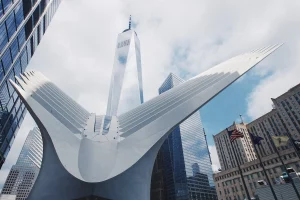
What’s inside the Oculus?
There’s plenty to do and see inside the Oculus! Not only are there several trains running through this transportation hub, but there are dozens of shops and restaurants. You can eat and shop or just pass on through.
Is the Oculus in NYC free to visit?
Yes, you can access the Oculus for free. You are welcome to come in, take pictures, sit down, cut through, and enjoy the building at your leisure.
What subways are in the Oculus?
Several trains are accessible at the Oculus. You can catch the 1, 2, 3, 4, 5, A, C, E, J, Z, R, and W trains. You can also catch the PATH train to Newark/Journal Square and Hoboken.
What are the hours of the Oculus NYC?
The Oculus is open 24 hours a day, 7 days a week. Because it provides access to the subways and PATH station, which are also 24/7, the building is always open. The shops and restaurants, however, keep their own hours.
